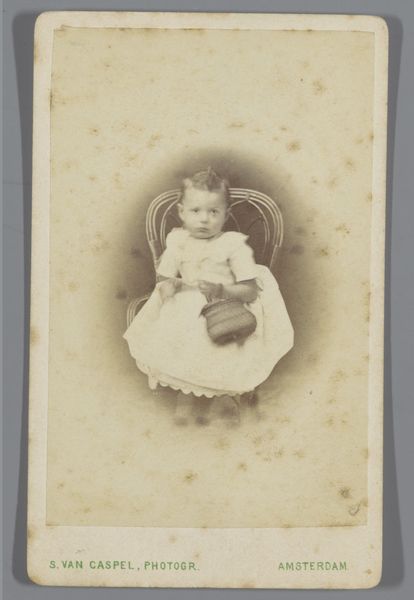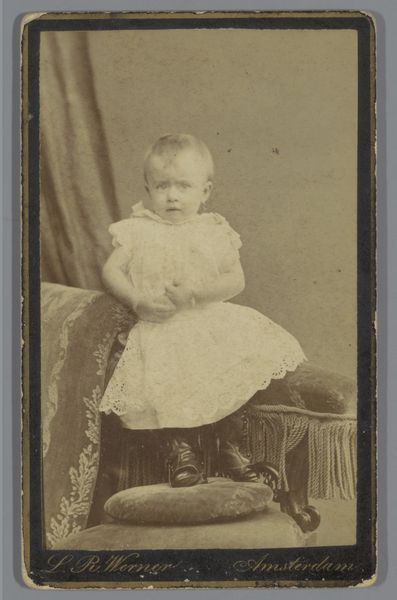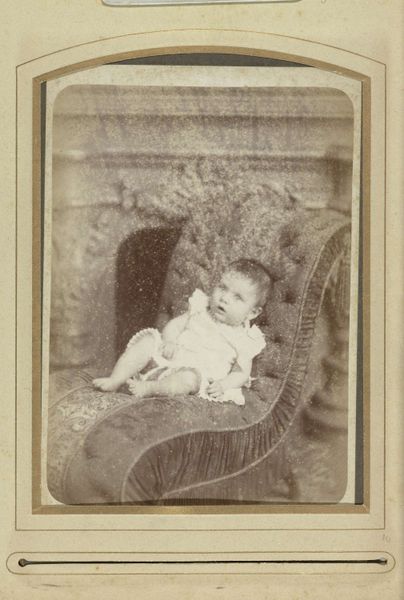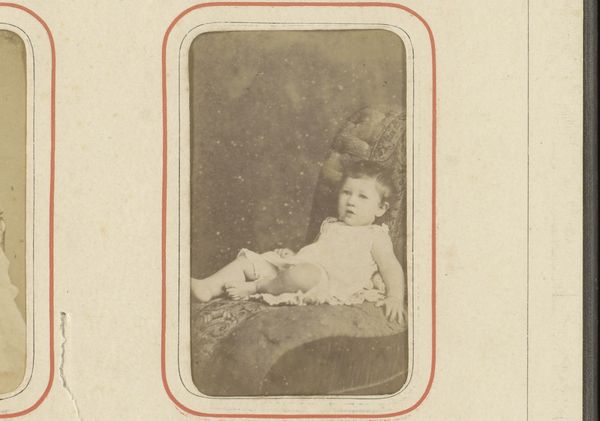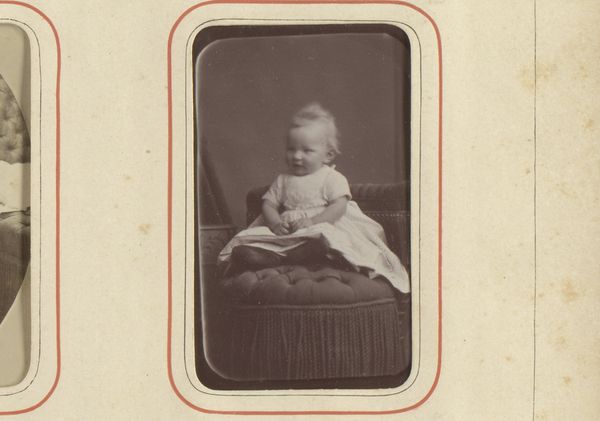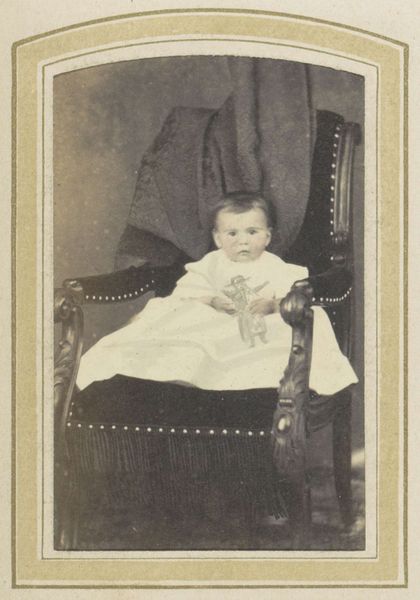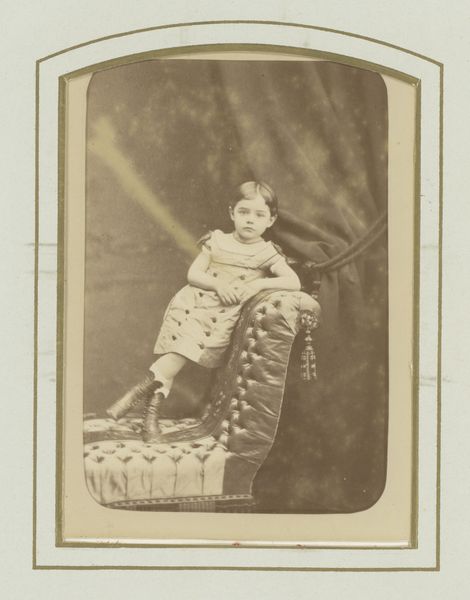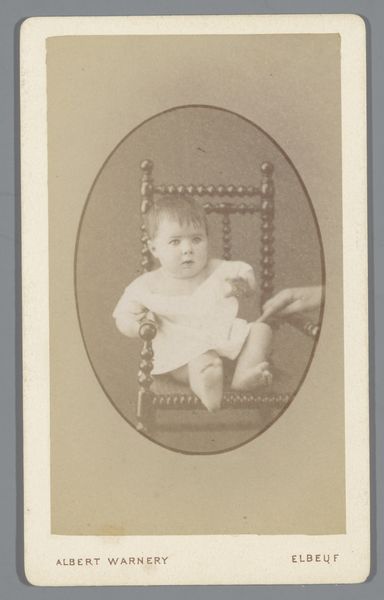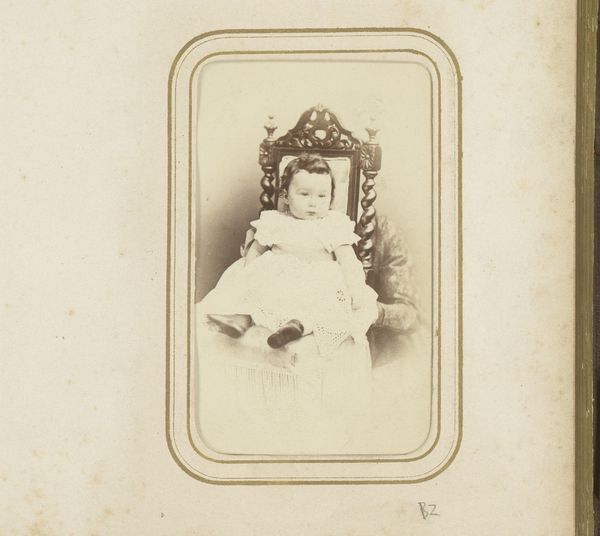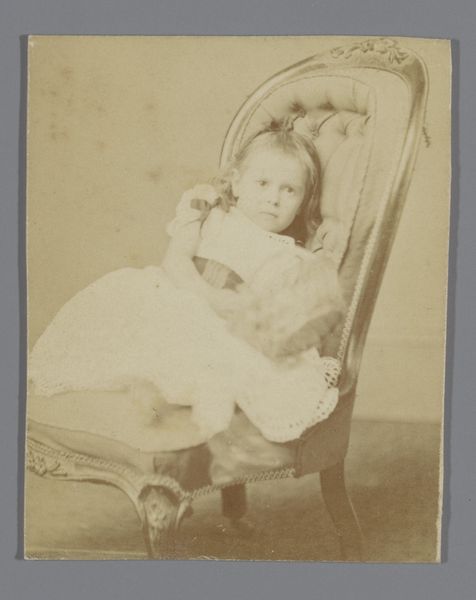
photography, albumen-print
#
portrait
#
still-life-photography
#
photography
#
albumen-print
Dimensions: height 105 mm, width 63 mm
Copyright: Rijks Museum: Open Domain
Editor: This albumen print, taken sometime between 1867 and 1871 by August Rombaut, is titled "Portret van een onbekend kind met een bloem in een fauteuil," or "Portrait of an unknown child with a flower in an armchair." It’s striking how this seemingly simple portrait evokes such a formal, almost staged atmosphere. What do you see when you look at this photograph? Curator: Well, it speaks volumes about the democratization of portraiture in the latter half of the 19th century. Before photography became accessible, portraits were largely the domain of the wealthy. This photograph signals a shift where the middle class could participate in image making. Notice the rich leather armchair, a clear signifier of bourgeois comfort carefully placed to convey a sense of social standing. Editor: It’s interesting that you point out the chair, because my immediate assumption was the child was positioned this way by the adults…sort of placed as a sign of status, as opposed to sitting naturally. Curator: Exactly! The photograph becomes a public declaration. What I find most telling is the child's detached gaze, coupled with the inclusion of the flower. The flower adds a sentimental touch, softening the rigid formality but is also a popular symbol. It transforms the portrait from merely an assertion of status into a curated display of idealised childhood. This presentation normalizes and reproduces the values and aspirations of that specific societal group. How do you interpret that the child is considered “unknown” given the presentation of social class here? Editor: The child's anonymity actually reinforces that idea. The image becomes less about the individual and more about representing an ideal. Curator: Precisely! Photography in the 19th century wasn't just about capturing reality, but about constructing it to perpetuate a specific worldview. This image provides so much understanding of how families at this time considered themselves. Editor: I didn't consider the societal performance that went into even a child's portrait at this time. This really makes me think about the cultural weight that photographs can carry.
Comments
No comments
Be the first to comment and join the conversation on the ultimate creative platform.

